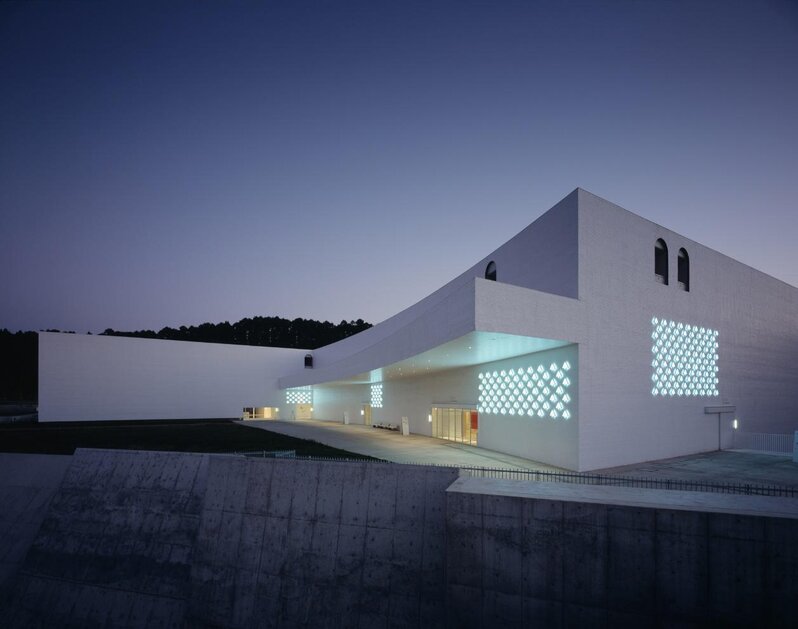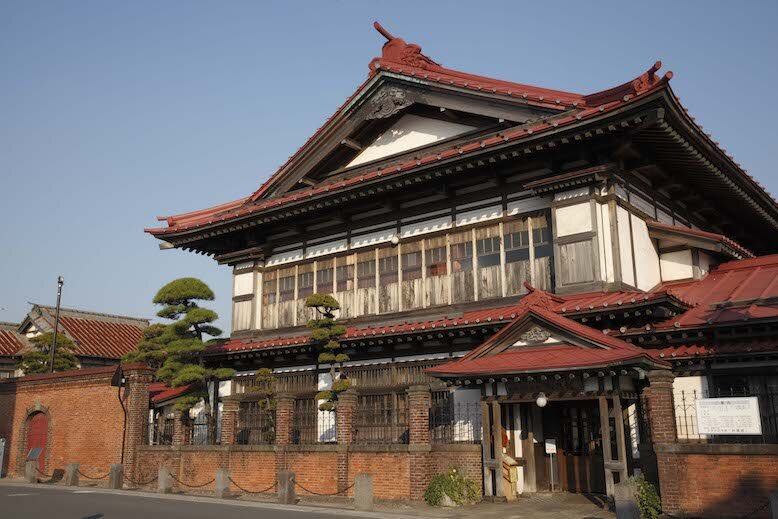Aomori, meaning “blue forest” in Japanese, dips one of its most beautiful landmarks, Aomori Museum of Art, in blue neon at dusk. It's ironic that one of the prefectures most modern symbols, the museum, is also located next to the archaeological site of Sannai Maruyama Site which dates from the Jōmon era (15,000 - 3000 BC).
Explore Aomori Art Museum

The exterior of Aomori Art Museum. The design of the building is by Jun Aoki.
Get your history fix before you step into the museum where you will be greeted by the city’s most famous icon, Yoshitomo Nara’s Aomori-ken, a gigantic white dog, 8.5 meters tall.
Arguably one of Aomori’s most famous symbols, this friendly giant graces the backyard of Aomori Art Museum. ©Yoshitomo Nara
Besides featuring some of Japan's most famous artists, Aomori Museum of Art has no lack of works by internationally famous artists like Henri Matisse, Pablo Picasso and Wassily Kandinsky. Not to be missed are the backdrops for the ballet Aleko painted by the Russian master Marc Chagall. Measuring nine metres in height and 15 metres in length, these are perhaps the largest Chagall paintings in Japan. Painted in a tragic time in the painter's life when he was left bereft of his wife and living in exile, subdued tones of solitude cloud the three backdrops out of four that are housed in Aomori Museum of Art's permanent collection.
Don't miss the Shayokan
Another notable museum in Aomori not to be missed is the Osamu Dazai Memorial Museum, commonly referred to as Shayokan. Dedicated to Osamu Dazai, one of Japan’s best fiction writers in the last century, whose works like The Setting Sun are widely considered as modern-day classics in Japan.

Osamu Dazai Memorial Museum, or Shayokan, is named after the famous author’s books.
Built in 1907 by Dazai’s great-grandfather, this served as Dazai’s childhood home. A two-storey wooden structure made mostly of Hiba wood, for which Aomori is famous. It also features a number of Western additions to the traditional Japanese-style house. The writer’s favourite cloak and writing instruments, as well as some handwritten manuscripts, are also on display in the museum.


